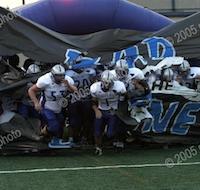How Team Norms Can Boost Team Effectiveness

Team norms—sometimes known as ground rules—revolve around how members of a team will interact, communicate, and conduct themselves as team members. Norms express intentions; they help team members agree on how they'd like to get along before situations emerge that might otherwise prevent them from getting along. Norm setting gives team members an opportunity to express what's important to them as well as to learn what's important to their teammates.
Team norms can address any aspect of the team’s functioning, such as safety, expected work hours, email inquiry response times, or meeting attendance. Norms that address a team’s operating rhythm, communication, decision-making, and accountability can have a big impact on team cohesiveness and performance.
For example, norms might include any or all of the following:
- Treat each other with dignity and respect.
- Avoid hidden agendas.
- Be genuine with each other about ideas, challenges, and feelings.
- Have confidence that issues discussed will be kept in confidence.
- Listen to understand.
- Practice being open minded.
- Don’t be defensive with your colleagues.
- Give your colleagues the benefit of the doubt.
- Support each other; don't throw each other under the bus.
- It's okay to not know the right answer and to admit it.
- Present problems in a way that promotes mutual discussion and resolution.
- Practice and experience humility.
- If you commit to doing something, do it.
- Respect the time and convenience of others.
Some teams create norms specifically for meetings, such as:
- Meetings will start on time.
- A designated scribe will take minutes and publish them for all.
- An agenda will be published in advance.
- Decision making is by consensus.
- Team members will hold themselves and each other accountable for commitments made to one another.
The process for creating team norms is flexible but is likely to work best when the method is set forth at the beginning, the steps are clearly delineated, responsibilities are set forth, and time limits are specified.
Norms certainly don’t solve every problem a team faces (if only it were that easy!). But posting the finalized list of norms in the team’s work areas creates a handy reminder of what team members agreed to. If people sometimes forget the norms or unintentionally violate them, the very process of having agreed to abide by them enables team members to remind each other of the behavior they’d like to strive toward.
Furthermore, norms provide a context for discussing grievances about team behavior, thereby preventing frustrations from festering. Out of such efforts, trust grows and the team strengthens.

